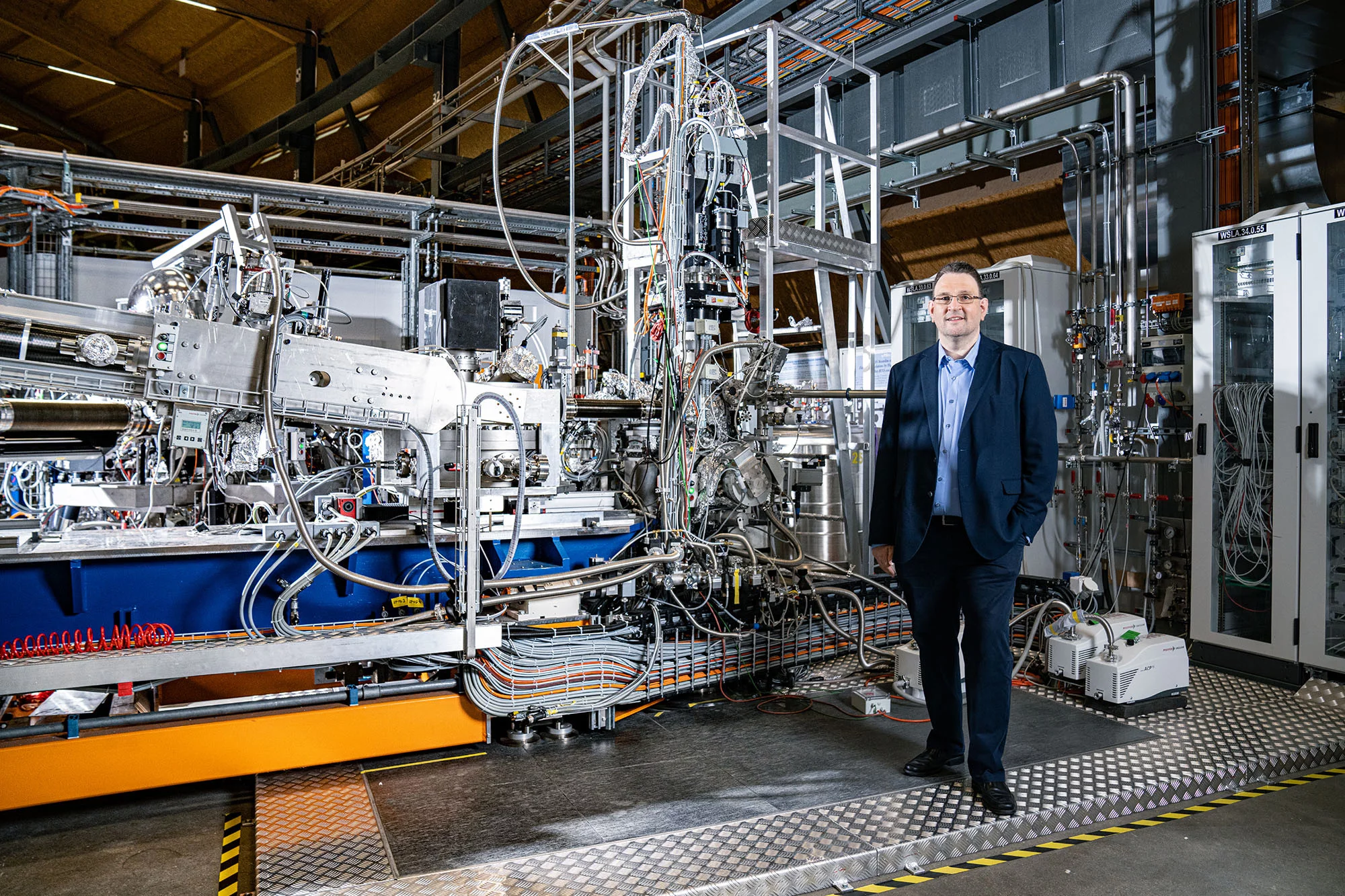For the first time, researchers have mapped the potential surfaces of water molecules in liquid water under normal ambient conditions at the Swiss Synchrotron Light Source SLS at the Paul Scherrer Institute PSI. This contributes to a better understanding of the chemistry of water and its behaviour in aqueous solutions.
Water is certainly the best-known liquid in the world. Water plays a crucial role in all biological and many chemical processes. The water molecules themselves hardly hold any secrets. In school already we learn that water consists of one oxygen atom and two hydrogen atoms. We even know the typical obtuse angle that the two O-H legs form with each other. In addition, we naturally know when water boils or freezes, and how these phase transitions are related to pressure. But between facts on the individual molecule and a deeper understanding of the macroscopic phenomena, there is a wide area of uncertainty. Only statistical information is known about the behaviour of the individual molecules in normal liquid water: the water molecules in the liquid phase form a fluctuating network of hydrogen bonds, disordered and dense, and their interactions are not at all as well understood as in the gaseous state.
Now, a team led by physicist Annette Pietzsch from the Helmholtz-Zentrum Berlin (HZB) has taken a closer look at ultrapure liquid water at room temperature and normal pressure. Using X-ray analysis at the Swiss Light Source of the Paul Scherrer Institute and statistical modelling, the scientists have succeeded in mapping the so-called potential energy surfaces of the individual water molecules in the ground state, which come in a large variety of shapes depending on their environment.
"The special thing here is the method: we studied the water molecules at the ADRESS beamline using the resonant inelastic X-ray scattering (RIXS) method," says Pietzsch. "The ADRESS beamline with its RIXS experimental station has a high efficiency for atom-specific measurements of oxygen, which are ideal for sensitive measurements of phonons and vibrations in the solid state and molecules, respectively," adds Thorsten Schmitt, head of the Spectroscopy of Quantum Materials research group at the Paul Scherrer Institute. The RIXS method, which was established at SLS 15 years ago, will be further developed to even higher sensitivity at future facilities at SLS 2.0 and SwissFEL in the coming years.
"Simply put, we nudged individual molecules very carefully and then measured how they fell back into the ground state," says Pietzsch. The low-energy excitations led to stretching oscillations and other vibrations, which – combined with model calculations – produced a detailed picture of the potential surfaces.
"This gives us a method to experimentally determine the energy of a molecule as a function of its structure," explains Pietzsch. "The results help to clarify the chemistry of water in the liquid phase, for example to understand better how water behaves as a solvent."
Text based on a communication from the Helmholtz-Zentrum Berlin
Contact
Dr. Thorsten Schmitt
Head of the Research Group Spectroscopy of Quantum Materials
Paul Scherrer Institute, Forschungsstrasse 111, 5232 Villigen PSI, Switzerland
Telephone: +41 56 310 37 62, e-mail: thorsten.schmitt@psi.ch [German, English]
Original publication
Cuts through the manifold of molecular H2O potential energy surfaces in liquid water at ambient conditions
Annette Pietzsch, Johannes Niskanen, Vinicius Vaz da Cruz, Robby Büchner, Sebastian Eckert, Mattis Fondell, Raphael M. Jay, Xingye Lu, Daniel McNally, Thorsten Schmitt, Alexander Föhlisch
PNAS, 5 July 2022
DOI: 10.1073/pnas.2118101119
Copyright
PSI provides image and/or video material free of charge for media coverage of the content of the above text. Use of this material for other purposes is not permitted. This also includes the transfer of the image and video material into databases as well as sale by third parties.

